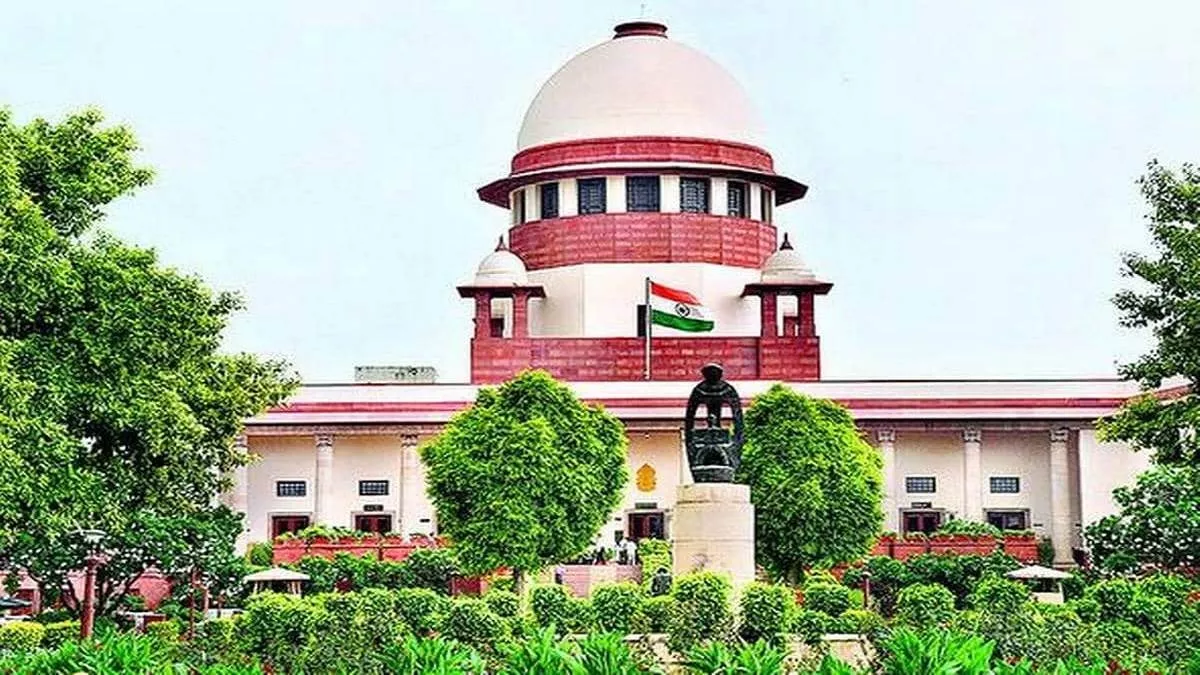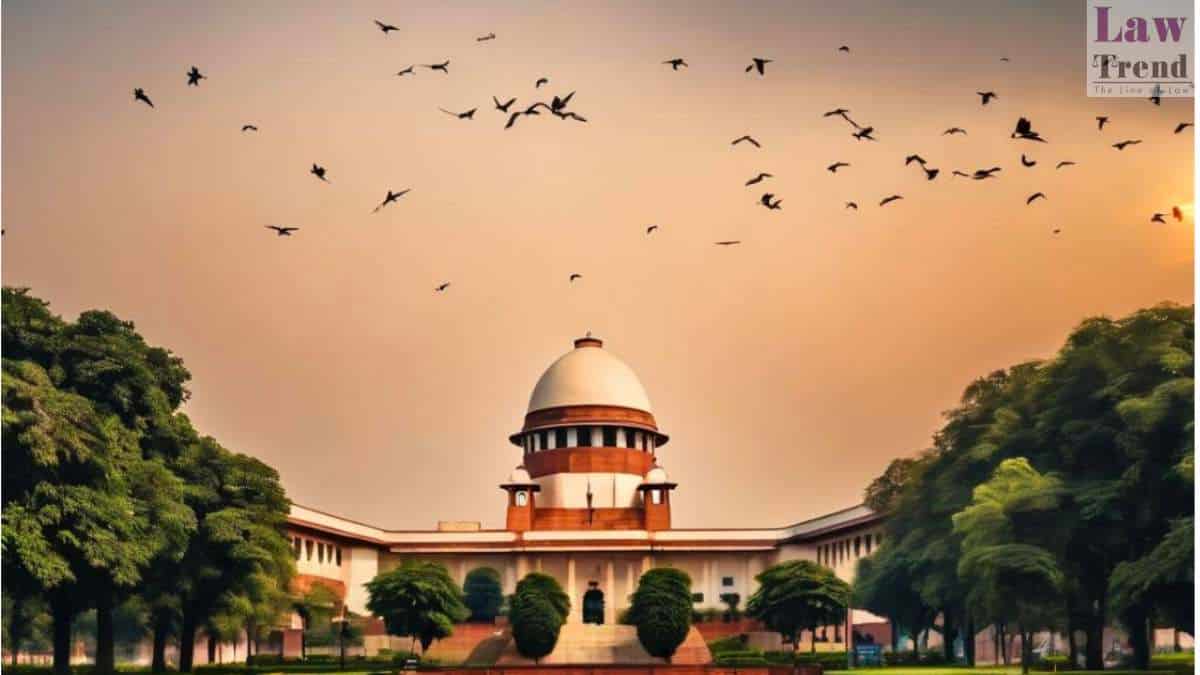US Supreme Court vs Indian Supreme Court (Special Information)
US Supreme Court vs Indian Supreme Court
Whenever there is talk of democracy in the world, people remember the names of only two countries, even if the person is not a citizen of that country. These two countries are India and the other is America. As you all might remember, the world America is the first country where a written constitution was implemented, while India has the record of adopting the world's largest written constitution the biggest thing is that, on the one hand, the US Supreme Court has been made more powerful than the government. In India, the Supreme Court has been given equal powers to the government and its functions have also been divided, so you all can see a clear picture of democracy in these two countries only.
American Supreme Court:- In America, there are dual state and separate courts in the country, that is, all the states have their own major courts, and their functions are already divided, whereas in India, this is not necessary. There should be State High Courts in all the states, just as there are Chief Courts in a total of 51 states of America, whereas India has only 25 High Courts, including a total of 28 states and 8 Union Territories. Even today, there is a system of joint courts for many states of India has been done.
The US Supreme Court deals only with matters related to federal, judicial, naval, maritime, and ambassadorial matters. This court does not have the right to give advice but has been given more authority in the judicial field. Its jurisdiction cannot be increased, and The big thing is that it has no authority over the state courts. That is, it is not binding on the state High Court to accept the decision of this court.
Supreme Court of India: - This Supreme Court has been given the right to look only at federal matters. It can also give advice to the government if needed, but the government is not bound to accept the advice and it is also that the court can also give advice. The judicial jurisdiction of the Supreme Court of India is limited, and the biggest thing is that its authority can be increased by the Parliament the thing to note is that the Parliament can never reduce its power. The decisions of this court are applicable across the country. It applies to all small to big courts. If it is not accepted, the Supreme Court can impose punishment against that court, hence the Supreme Court of India is considered to be the most powerful court in India.
The Supreme Court of India works under the integrated justice system. This court was established under the Government of India Act 1935 and has been working in India since 1937. Its main function is to help in implementing the state and central laws after independence. Later, its structure was changed, and on 28 January 1950, it had 5 parts, from Article 124 to 147; this court was discussed in detail; like in the year 1950, there were only 10 judges. In 1960, there were 13 judges, in 1977, 17 judges, 25 judges in 1986, 26 judges in 2008, 31 judges in 2009, and in 2019, this number has increased to 34. The Chief Justice is also included in all these numbers.
They are appointed as per the orders of the President of India, but in this, the Chief Justice and the judges of other High Courts of the states are also consulted.
Powers of the Supreme Court:- 1. Federal Court is the guardian of the fundamental rights of the citizen and the Constitution, 2. Freedom of appointment, 3. Security of tenure, 4. Fixed service conditions, 5. The conduct of the judge cannot be debated anywhere. 6. Prohibition from practicing law in any court after retirement; 7. Right to punish the person/institution/any lower court for contempt of the court's decision and the right to give a jail sentence of 6 years, 8. No reduction can be made in the judicial field, 9. The judiciary has been separated from the executive.
Other powers:- 1. Disputes related to the election of President and Vice-President can be settled in this court; 2. Investigation of the conduct of the Chairman and members of UPSC, 3. Right to change its previous decision, 4. Any Calling the cases pending in the High Court directly to itself, 5. All the decisions of the Supreme Court are applicable all over India. Even all the small and big courts have to accept this decision, 6. The Supreme Court itself has the power of the Indian Constitution. Has the right to explain.
7. Original Jurisdiction: Centre-state disputes and state-state disputes, such as water disputes, finance disputes, or emergency services, can be heard directly in the Supreme Court.
8. Judiciary:- Protector of Fundamental Rights Article 32, under which there are 5 types of rights: habeas corpus, mandamus, certiorari, prohibition, and quo warranto. The citizens' rights are protected if any citizen's fundamental rights are violated. But he can go directly to the Supreme Court or High Court
9. Advisory:- Advising the President, this court's opinion and subsequent decision on matters of public importance and treaties like the Cauvery water dispute or the Ram Janmabhoomi dispute were accepted by the entire country.
10. Court of Records:- The Supreme Court's decisions serve as evidence for all the courts, and no court can give any decision or comment against it.
11. Judicial Review:- If any law is made by the Parliament or State Assembly that is unconstitutional and violates the fundamental rights of the citizens, then the court can cancel it.
12. Appellate Jurisdiction:- Under this, the Supreme Court hears the decisions of its lower courts.
Salary:- Their salary is decided by the Indian Parliament, in 2009 the salary of the Chief Justice was Rs 33000, and after 2009, it became Rs 1 lakh, and today, in 2024, Rs 2.80 lakh per month is given. On retirement, 50 of the last month's salary is given. There is a rule to get % as a pension.
Location of Supreme Court:- Delhi has already been declared, but the Chief Justice has been given the right to establish the Supreme Court anywhere else, but for this the order of the President will have to be taken.
Court Procedure: According to Article 143, constitutional cases can always be heard by a Team of 5 or 7 judges, and the decision will have to be made on the basis of majority only.
Qualifications: - Must be a citizen of India, must have been a judge in a State High Court for at least 5 years or an advocate for 10 years, including in the High Court or any other court, must be a respected jurist in the eyes of the President and there is no age limit for this post. There is no time limit
Oath: - The oath of office is administered by the President. The tenure is not fixed, but one can remain on this post until the maximum age of 65. To remove any judge from the post, one will have to go through the process of impeachment, i.e. The government can remove a judge from his post only after getting a majority from both Houses of the country otherwise, there is no other way.
Appointment: - In the 99th Constitutional Amendment in 2014, the Collegium System was made a new body National Judicial Appointment Commission, and in 2015, the Supreme Court declared it unconstitutional, and even today, the same old procedure is being followed.
#USSupremeCourtvsIndianSupremeCourt, #democracy, #writtenconstitution, #AmericanSupremeCourt, #kldclasses , #blog , #SupremeCourtofIndia,e#ditoral ,#governmentactof1935 , #actof1935, #processofimpeachment , #CollegiumSystem , kldclasses.in, kldclasses #PowersoftheSupremeCourt, #electionofpresident, #JudicialReview, kld classes blogger




